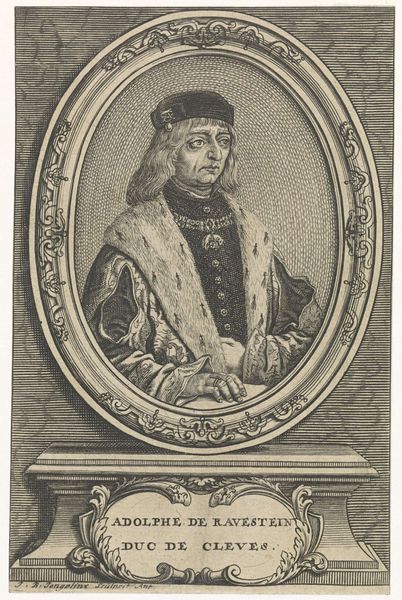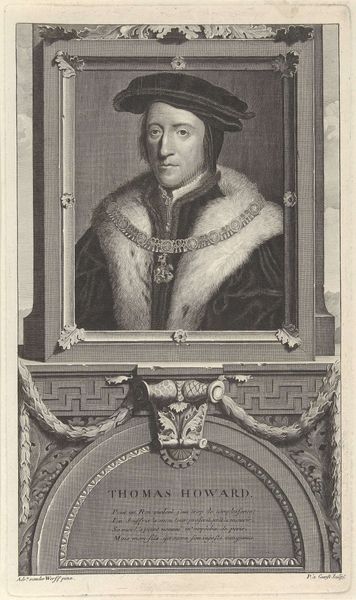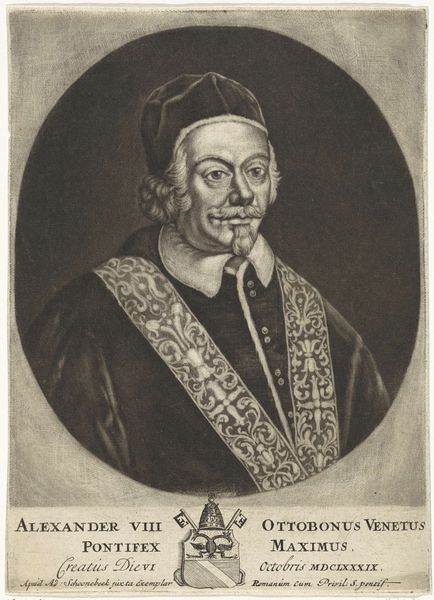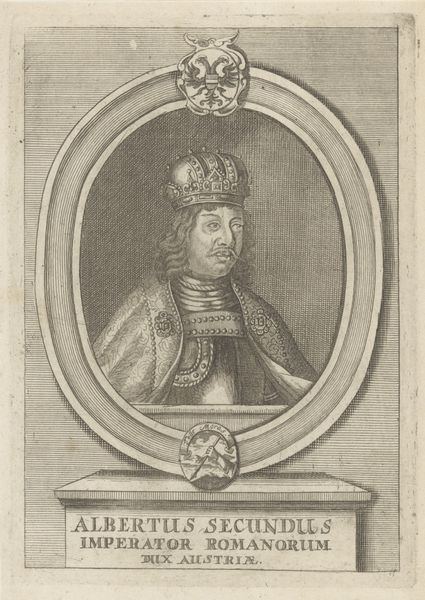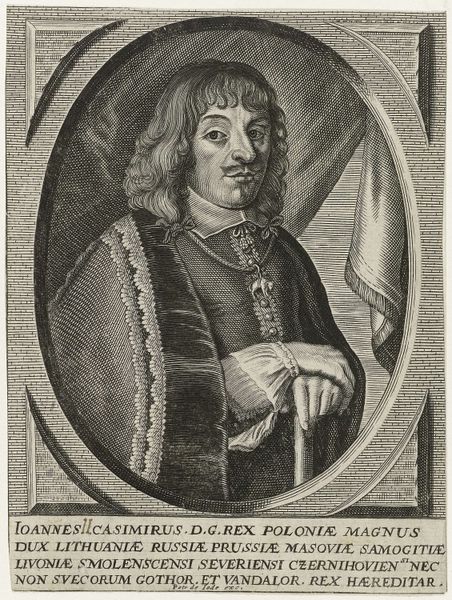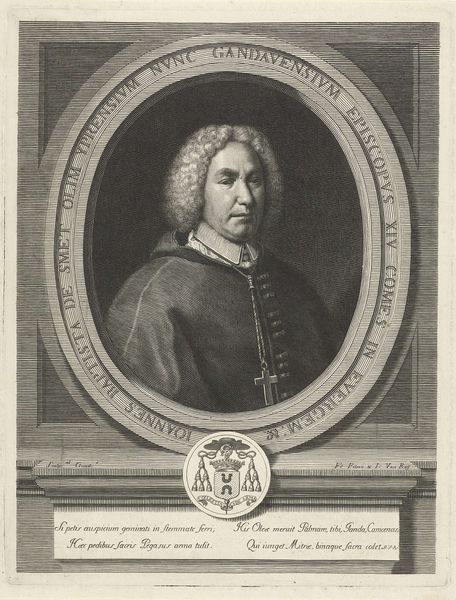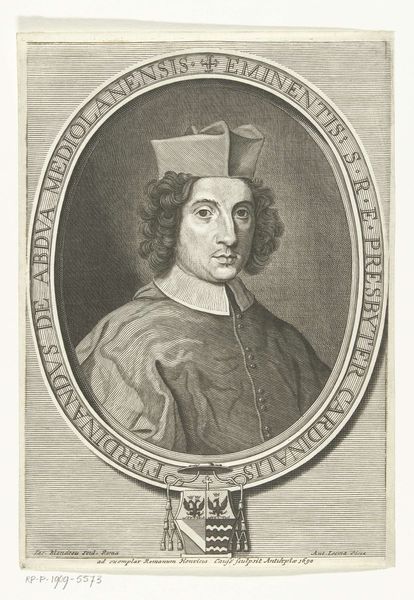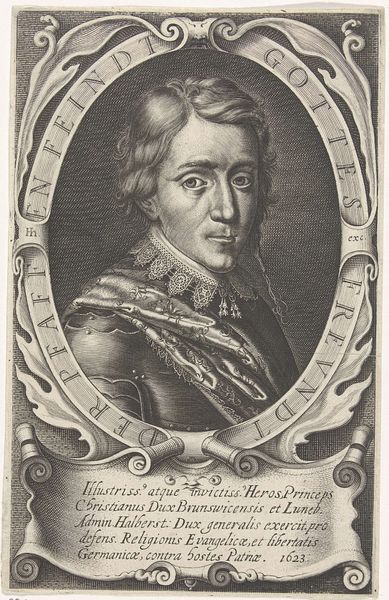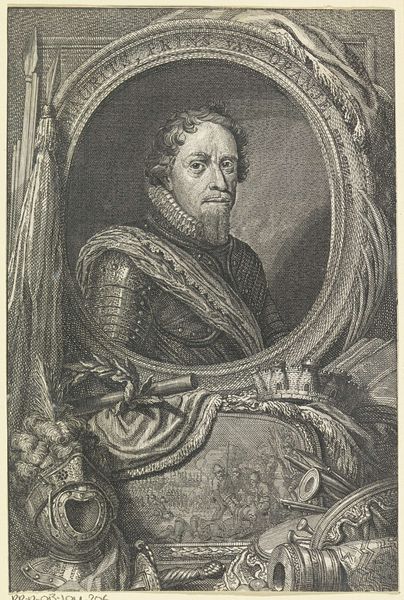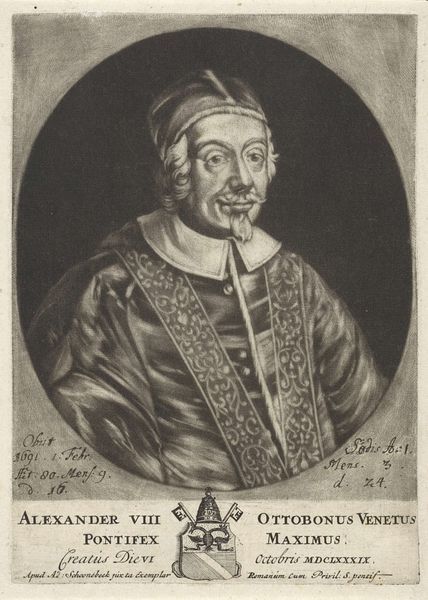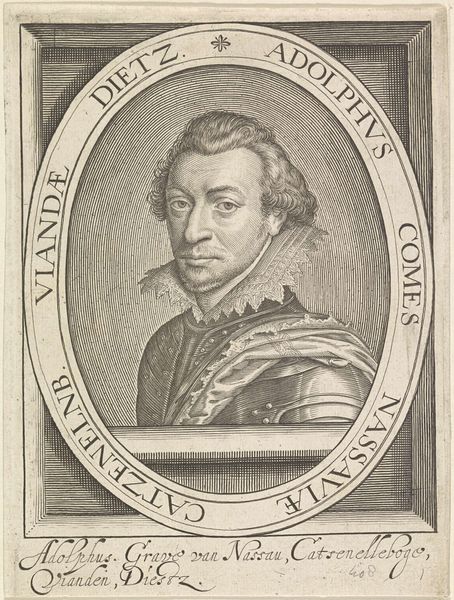
engraving
#
portrait
#
baroque
#
old engraving style
#
caricature
#
pencil drawing
#
history-painting
#
academic-art
#
engraving
Dimensions: height 142 mm, width 89 mm
Copyright: Rijks Museum: Open Domain
Curator: This engraving from between 1700 and 1712 by Cornelis Huyberts is titled "Portret van paus Clemens XI," or "Portrait of Pope Clement XI." Editor: My first impression is that it has a formal but rather somber mood. The precise linework creates a very controlled, almost stoic depiction. Curator: The work exemplifies the art of engraving, popular at the time for disseminating images. The use of metal plates to produce multiple identical images speaks to a growing culture of reproducibility and consumption. Editor: The composition is quite classical, the oval frame emphasizing the controlled form of the Pope and highlighting his facial features with precision and clear lines. It uses shape and symbol effectively. Curator: Absolutely, and it is fascinating to see how Huyberts utilized this process to translate the opulence and power associated with the papacy into a reproducible image, catering to an audience that spanned beyond the elite circles of Rome. Editor: We could examine this through the semiotic theory of Roland Barthes as to understand the symbolic signs the work carries within baroque artistic expressions. This is definitely not a mere reproduction. Curator: It pushes past that and highlights the artist's labor in reproducing these images, making them more accessible for varied social classes—challenging notions of art as exclusive to the elite, or limited by religion. Editor: The engraver's skill and attention to detail lend a degree of monumentality, something expected when rendering figures of great influence, and in contrast, the engraving gives a wider access and availability. Curator: Exactly, a tension embodied by the materials themselves and their purpose of replication and wider distribution that makes us appreciate its cultural relevance. Editor: By carefully examining the form and composition, we get insights into a powerful, historically rooted cultural representation. Curator: Indeed, understanding its production offers a wider appreciation for its impact within the visual and political landscape.
Comments
No comments
Be the first to comment and join the conversation on the ultimate creative platform.
